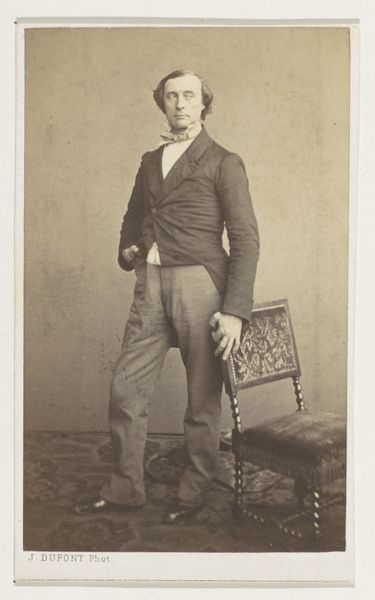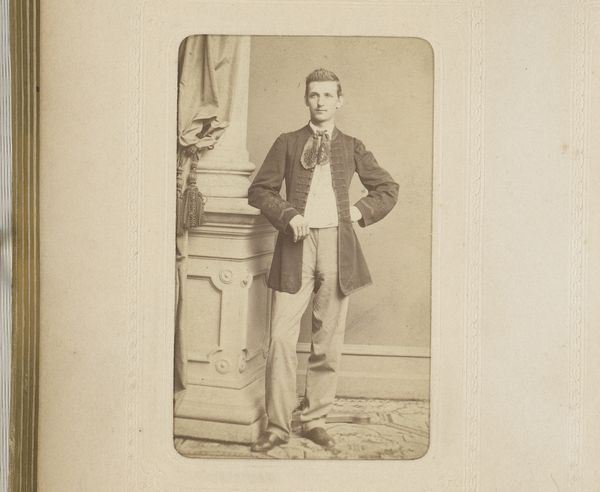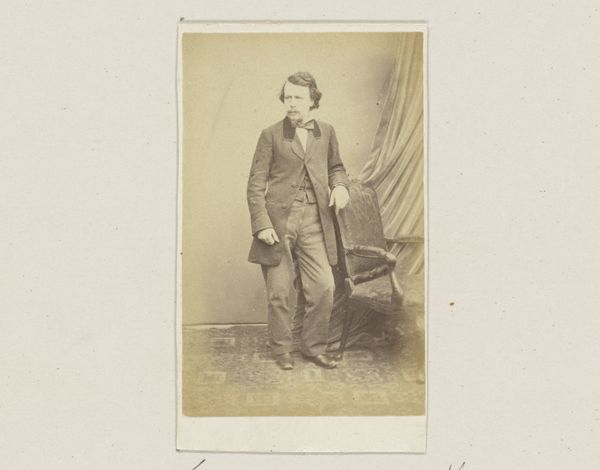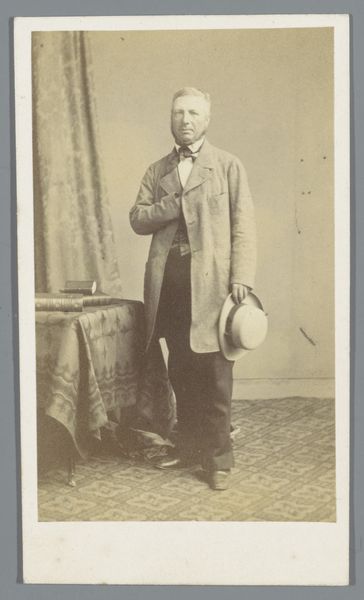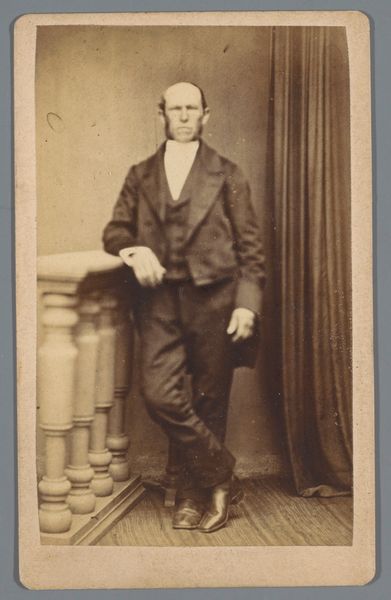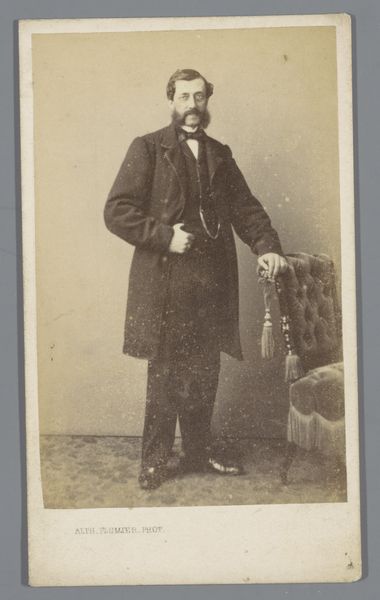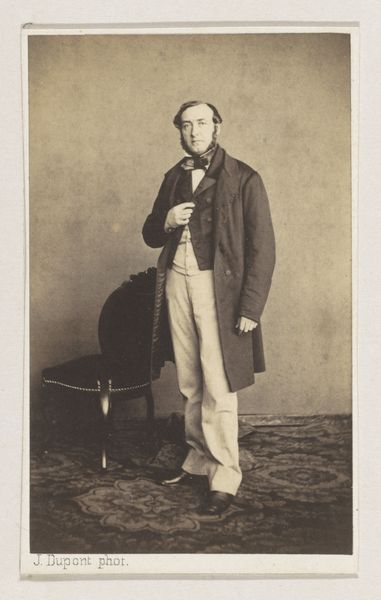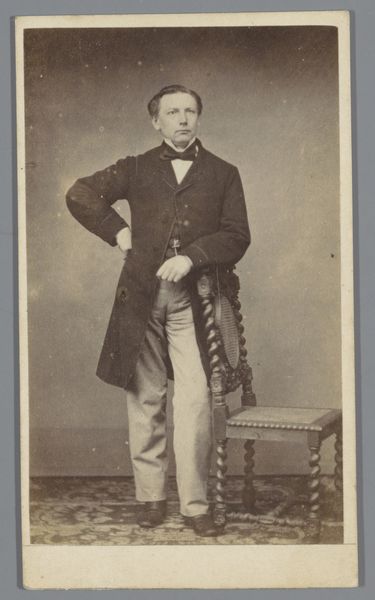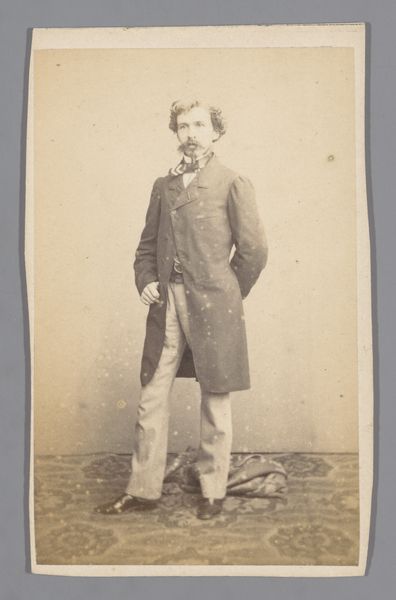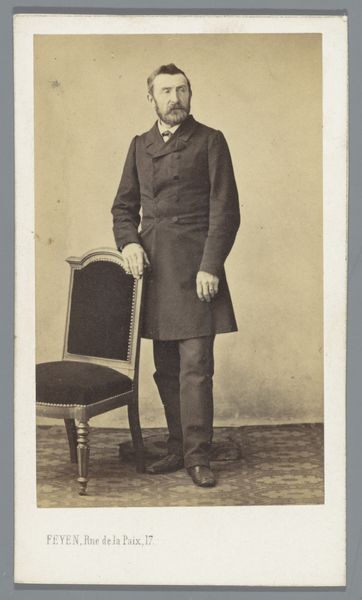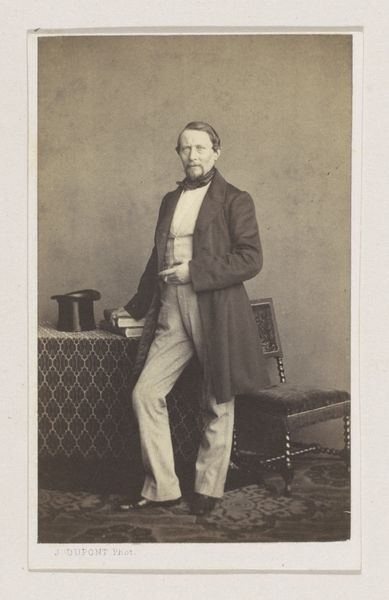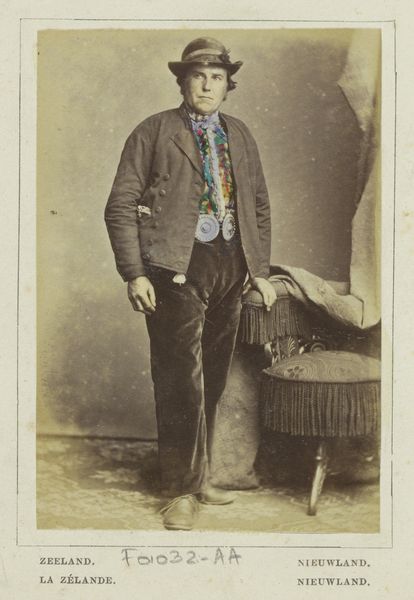
photography, albumen-print
#
portrait
#
toned paper
#
paper non-digital material
#
photo restoration
#
photography
#
albumen-print
Dimensions: height 105 mm, width 62 mm
Copyright: Rijks Museum: Open Domain
Curator: Immediately, I'm struck by the gentle light and the almost ethereal quality of the man's pose. It's so graceful, like a dance captured in sepia tones. Editor: Indeed. This albumen print, believed to have been produced sometime between 1861 and 1870, presents us with a portrait of an unknown gentleman, attributed to Eugène Vaillant. We can see how this method using egg whites makes the tonal range subtle and luminous. Curator: Absolutely. Notice how the photographer positions the man against the balustrade, using it to create depth and shadow, also as a signal for his socio-economic status, I'm certain. The textured background has almost a painted quality to it, which soften any potential harshness in such lighting. Editor: Agreed. I think what's interesting, considering it’s a photographic portrait, is its ties to the tradition of portraiture which always came at a considerable cost. And note the subtle props. The walking stick, the held hat. Are these meant to denote sophistication, an intellectual standing perhaps? Who was allowed to possess objects like these, what's their social context? Curator: Yes, objects speak volumes! To me, they subtly shift the emphasis towards the man’s control over his own representation. Even his attire--it’s meticulously styled, isn't it? Editor: Certainly so, if we consider fashion plates of the time period, such an effect would’ve required planning. And consider the labor involved. The clothes, likely hand-stitched, reflect hours of labor by unseen hands. Curator: Right. This photograph allows us a unique opportunity to observe not just the final product, but to really deconstruct the processes and labor involved, to reassemble social dynamics around 19th-century photographic practices. Editor: In a way, that single image becomes almost like an iceberg, with a surface for the viewer but hinting at greater submerged depths within a society defined by labor, class, and the visual language of fashion. It's fascinating, isn't it? Curator: It really is. I come away thinking of the man in this portrait and all who've helped him pose so grandiosely... and, inevitably, myself, a worker among so many in a chain that's now included you and I. Editor: Precisely, an ever-evolving chain! It allows a peek into layers of intention and happenstance within the realm of portraiture that invites many interpretations for years to come.
Comments
No comments
Be the first to comment and join the conversation on the ultimate creative platform.
